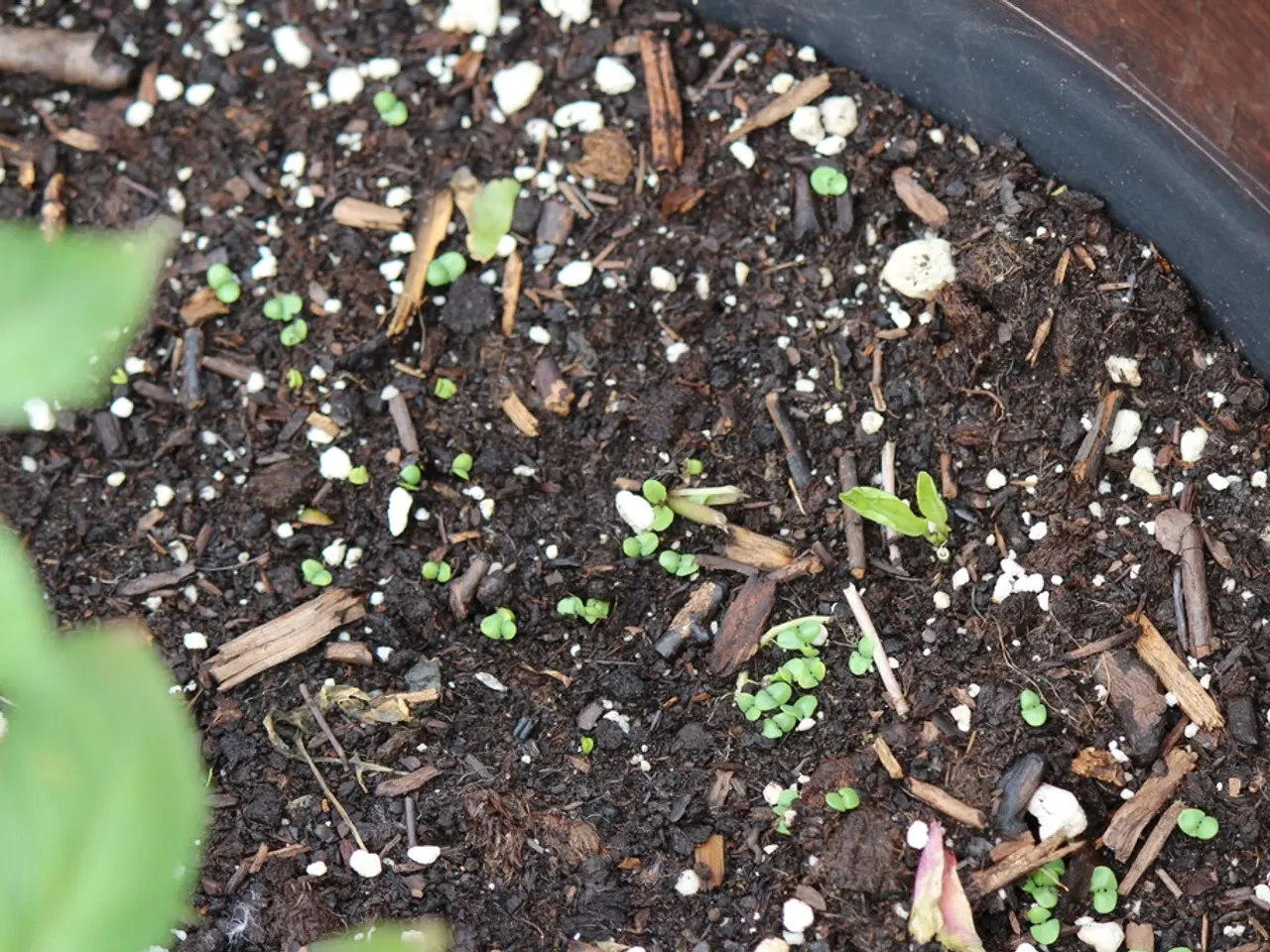An Instructional Guide on Testing Your Garden Soil, Broken Down into Simple Steps
In the world of gardening, maintaining a thriving garden begins with understanding the soil. One crucial factor to consider is the pH level of the soil, which can significantly impact the growth of plants. This article presents a practical, home method to estimate soil pH using common pantry ingredients – baking soda and vinegar.
To get started, collect a small amount of soil (about 2 tablespoons) from your garden. Divide the soil sample into two separate containers and add enough distilled water to each container to make the soil muddy.
Next, add about 1/2 cup of baking soda to the first container. If fizzing or bubbling occurs, it indicates that your soil is acidic (pH less than 7). Conversely, add about 1/2 cup of vinegar to the second container. If fizzing happens here, it suggests that the soil is alkaline (pH greater than 7). If neither reaction occurs, the soil is approximately neutral (pH around 7).
This test uses the chemical reaction of baking soda (a base) reacting with acids in the soil, and vinegar (an acid) reacting with bases, to give a rough pH indication. It's simple, quick, and requires only common pantry items.
For a more precise pH measurement at home, you can also purchase pH test strips designed for soil testing or use a DIY yeast-flour mixture, but these methods are more complex. Commercial test kits or professional lab tests provide more accurate pH values and additional soil nutrient data but aren't pantry-based.
Beyond pH, good soil structure, soil texture, and nutrient levels are essential for growing healthy plants. Good soil structure allows for good porosity, enabling the free movement of water and oxygen, which is essential for healthy root growth. Soil texture refers to the proportions of sand, silt, and clay in the soil.
Taking a soil sample requires cleaning tools, digging multiple holes, taking soil slices, mixing the samples, drying the soil, collecting the sample, and sending it for testing. Other important soil nutrients include magnesium, calcium, iron, and sulfur. A soil test can provide a detailed analysis of the nutrient content and identify any deficiencies.
Maintaining nutrient levels in the soil is vital for growing healthy plants. The most common soil nutrients are nitrogen, phosphorus, and potassium, often referred to as NPK. Good drainage is crucial for plant health as it prevents waterlogging. The presence of earthworms and other organisms in the soil is an indicator of its health and fertility.
The ideal soil texture, often referred to as loamy soil, maintains a good balance of moisture and nutrients. Soils with a high Cation Exchange Capacity (CEC) can hold more cations and are more fertile because they can retain more nutrients for plant uptake. The CEC of a soil can be measured through various methods, including direct measurement and summation of base cations.
It is recommended to take soil samples in the fall or early spring. Avoid taking samples from areas where ashes, manure, compost, or brush have been dumped or burned. Soil pH measures the acidity or alkalinity of the soil on a scale from 0 to 14, with 7 being neutral.
In summary, baking soda and vinegar reactions offer a practical home method to estimate if soil is acidic or alkaline using pantry ingredients. This simple test can help gardeners gain insights into their soil's pH levels and take steps towards maintaining a thriving garden.
This simple home method using baking soda and vinegar can help you estimate the pH levels of your garden soil, offering insights into maintaining your garden's soil health. To improve your home-and-garden lifestyle, regularly checking the pH levels of your soil can be beneficial in adjusting your lifestyle practices according to the soil's needs for thriving plant growth.




